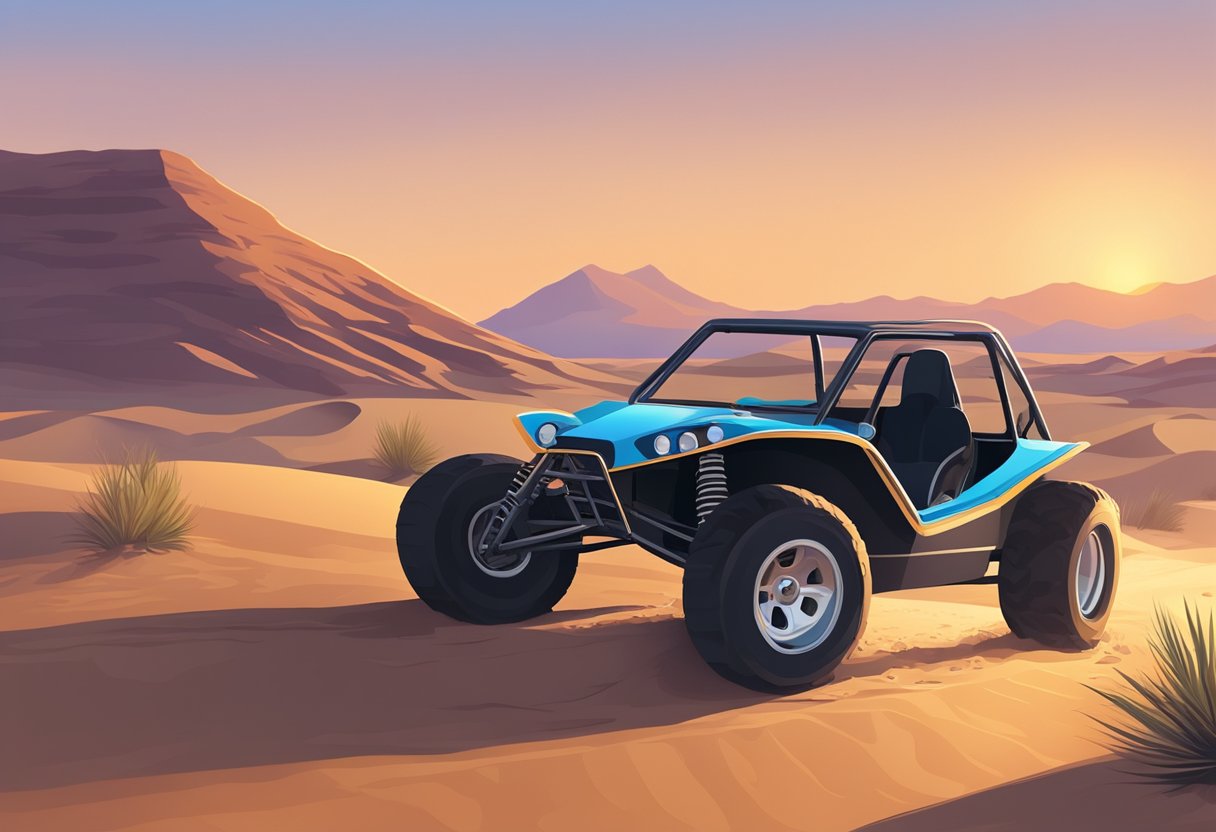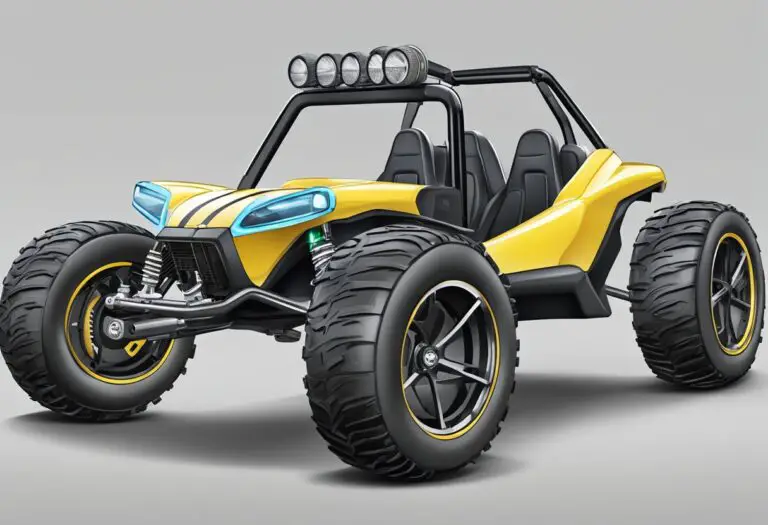How to Get a VIN Number for a Dune Buggy: A Clear Guide

Dune buggies are thrilling off-road vehicles, but like any other vehicle, they need a VIN number. A VIN (Vehicle Identification Number) is crucial for legal purposes, such as registration, insurance, and safety tracking. This guide will walk you through obtaining a VIN number for your dune buggy, whether it’s custom-built, modified, or purchased as-is.
Understanding VIN Numbers and Their Importance
What Is a VIN Number?
A VIN, or Vehicle Identification Number, is a unique 17-character code assigned to every motor vehicle. It serves as a fingerprint for vehicles, containing critical information such as the manufacturer, model year, and place of origin. VINs are essential for tracking recalls, registrations, warranty claims, and thefts.
Why a VIN Is Essential for a Dune Buggy
For dune buggies, a VIN number is crucial. Without it, you might face difficulties in registering your buggy, obtaining insurance, or even selling it legally. A VIN helps authorities identify and verify the vehicle, ensuring it complies with safety and emission standards.
Differences Between Standard Vehicles and Dune Buggies
Unlike standard vehicles, dune buggies often lack factory-assigned VINs due to their custom or off-road nature. Obtaining a VIN for a dune buggy involves additional steps, including inspections and documentation of its build. This makes the process unique compared to regular cars or motorcycles.
Preparing to Obtain a VIN for a Dune Buggy
Documenting Your Dune Buggy’s Build
Before applying for a VIN, gather detailed documentation of your dune buggy. This includes:
- Receipts for parts and materials: Proof of purchase helps verify ownership and the legality of the build.
- Photographs of the build process: Visual evidence of your dune buggy’s construction can support your application.
- Build plans or blueprints: If available, include detailed plans that outline the construction process.
Compliance with Local and State Regulations
Each state has specific regulations for issuing VINs, especially for custom or off-road vehicles. Research and comply with your state’s requirements, which might include safety inspections and emission tests. For example, California requires dune buggies to meet certain emission standards, while other states may focus more on safety features.
Getting a Manufacturer’s Certificate of Origin (MCO)
A Manufacturer’s Certificate of Origin (MCO) is a document that certifies a new vehicle’s origin and ownership. For custom-built or modified dune buggies, obtaining an MCO can be tricky but essential. If you’re buying a new kit or parts from a reputable manufacturer, they may provide an MCO. This document can simplify the VIN application process.
Steps to Apply for a VIN Number for Your Dune Buggy
Step 1: Contacting the Appropriate State Agency
Start by contacting your state’s Department of Motor Vehicles (DMV) or equivalent agency. They handle VIN issuance and will guide you through the process. Each state may have different agencies or departments handling this, so check your local DMV website for specific details.
Step 2: Filling Out Application Forms
Your state’s DMV will provide the necessary forms to apply for a VIN. Common forms include:
- Application for Title or Registration: This form includes details about your dune buggy and its ownership.
- Vehicle Verification or Inspection Form: Required for custom-built vehicles, this form confirms that your buggy meets safety and legal standards.
Step 3: Submitting Required Documentation
Submit the following documents along with your application:
- Proof of ownership: This could be the MCO, receipts for parts, or a bill of sale.
- Build documentation: Include your build history, receipts, and photos.
- Identification: Provide a copy of your driver’s license or state ID.
Step 4: Vehicle Inspection
An inspection may be required to verify that your dune buggy meets safety and legal standards. Inspections typically include:
- Safety checks: Ensuring the buggy has necessary safety features like lights, mirrors, and seat belts.
- Emission tests: Some states require emission compliance, even for off-road vehicles.
Prepare your buggy by checking all these aspects beforehand.
Step 5: Paying Applicable Fees
Fees for obtaining a VIN vary by state and may include:
- Application fee: Covers processing your application.
- Inspection fee: Charged for the vehicle inspection.
- Title fee: For issuing the title with the new VIN.
Fees range from $50 to $200, depending on your location.
Step 6: Receiving Your VIN
Once approved, you will receive your VIN. It might come as a metal plate, a sticker, or instructions for engraving it directly onto your dune buggy’s chassis.
Attaching the VIN to Your Dune Buggy
Recommended Placement for VINs
VINs should be placed in accessible and visible locations on your dune buggy. Common spots include:
- Frame or chassis: Usually on the driver’s side.
- Dashboard: Near the base of the windshield.
- Engine bay: On a visible part of the engine block.
Methods for Affixing the VIN
Choose a method based on your state’s requirements and your buggy’s construction:
- Engraving: Permanently engrave the VIN onto the chassis using an engraving tool.
- Metal plate: Affix a metal plate with the VIN using rivets or welding.
- Sticker: Use a durable, tamper-evident sticker if permitted.
Ensure the VIN is securely attached and easily readable.
Common Challenges in Obtaining a VIN for a Dune Buggy
Issues with Custom Builds
Custom builds can complicate the VIN application process due to varying part origins and documentation gaps. To address this:
- Keep detailed records: Maintain thorough documentation of every part and modification.
- Be prepared for additional scrutiny: Inspectors may closely examine custom builds to verify compliance.
Navigating Varying State Regulations
State regulations can differ significantly. For example, Nevada might have different safety standards than Texas. To navigate this:
- Research your state’s specific requirements: Visit your local DMV’s website.
- Consult with experts: Join local dune buggy clubs or forums for advice on state-specific regulations.
Handling Missing or Incomplete Documentation
Missing documentation can halt your application. To mitigate this:
- Gather alternative proof: Use photos, build logs, or alternative receipts.
- Contact previous owners or manufacturers: They might provide replacement documentation or proof.
Maintaining Your VIN and Legal Compliance
Regular VIN Checks and Inspections
Regularly check the condition of your VIN and ensure it’s legible and intact. Schedule periodic inspections to:
- Verify compliance: Ensure your buggy meets current safety and emission standards.
- Prevent tampering: Make sure the VIN remains secure and tamper-proof.
Updating VIN Information After Modifications
Significant modifications may require updating your VIN records. Contact your state’s DMV to report changes such as:
- Engine swaps: If you replace the engine, you might need to update the VIN record.
- Major structural changes: Any modifications affecting the vehicle’s chassis or body.
Dealing with VIN Theft or Loss
If your VIN is stolen or lost:
- Report immediately: Notify local authorities and your state’s DMV.
- Apply for a replacement: Follow your DMV’s process for replacing a lost or stolen VIN.
FAQs About Getting a VIN Number for a Dune Buggy
Can I Use the VIN from a Donor Vehicle?
Using a VIN from a donor vehicle can be problematic. Legal issues include:
- Ownership conflicts: The donor vehicle’s VIN may be tied to previous registrations or insurance policies.
- Compliance issues: The VIN might not reflect the modifications or current state of your dune buggy.
It’s better to obtain a unique VIN specific to your buggy.
How Long Does the VIN Application Process Take?
The duration varies by state and application completeness. Typical timeframes include:
- Initial application review: 2-4 weeks.
- Inspection scheduling: 1-2 weeks.
- VIN issuance: 1-3 weeks after inspection approval.
Completing all required steps promptly can help speed up the process.
Do All States Require a VIN for Dune Buggies?
Not all states require VINs for dune buggies, especially if they’re used exclusively off-road. Check your local regulations to determine:
- Registration requirements: Some states may not require registration for off-road-only vehicles.
- Insurance needs: Even if a VIN isn’t required, having one might be necessary for insurance purposes.
What If My Dune Buggy Doesn’t Meet Safety Standards?
If your buggy fails to meet safety standards:
- Identify the issues: Understand what specific aspects need improvement (e.g., lights, mirrors, emissions).
- Make necessary modifications: Upgrade or repair your buggy to meet the required standards.
- Schedule a re-inspection: Once modifications are complete, schedule a new inspection.
Additional Tips for Dune Buggy Enthusiasts
Keeping Detailed Build Records
Maintaining comprehensive records is essential for:
- Future modifications: Helps in tracking and documenting further changes.
- Resale value: Detailed records can increase the buggy’s value and ease the selling process.
Organize records digitally and physically, ensuring easy access when needed.
Joining Dune Buggy Clubs and Forums
Engage with the dune buggy community to:
- Gain insights: Learn from others’ experiences with VIN applications and builds.
- Get support: Access resources and advice for troubleshooting common issues.
Online forums and local clubs offer valuable networking opportunities.
Understanding the Impact of Modifications on VIN
Modifications can affect your buggy’s legal status. Consider:
- Compliance implications: Ensure modifications don’t violate local regulations.
- Insurance impacts: Major changes might require notifying your insurance provider.
Always keep your VIN information up to date to reflect significant modifications.
Conclusion
Obtaining a VIN number for a dune buggy involves a detailed process but is essential for legal compliance and ownership verification. By understanding the importance of a VIN, preparing your documentation, and navigating the application steps, you can ensure your dune buggy is legally recognized and ready for adventures. Stay compliant with regulations, keep detailed records, and connect with fellow enthusiasts to make the process smoother and more enjoyable.






